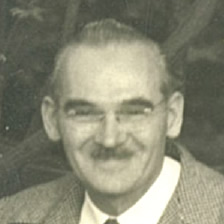THE RAW AND THE COOKED
By John Hart, as published in Caesura (San Jose Center for Poetry and Literature), Summer 2001
When Allen Ginsberg died, New Yorker editor David Remnick spoke of “the great (and long over) debate between the raw and the cooked in American poetry.” Ginsberg, to Remnick, was the triumphant prophet of the Raw: of a poetry based on casualness, spontaneity, unfiltered American speech. Enough of that hard-working Modernism, with its drastic images, its cross-grained word-choices, its sometimes mysterious structures, its cookedness. “First thought, best thought,” Ginsberg famously preached, and seemed to speak for many. After half a century of labor and experiment, the poetic spirit of the age seemed ready for a breather.
Today, for all its bustle of styles and approaches, poetry still seems to be taking that breather; or perhaps the very ambitions of the art have changed. The best-selling model today is the poem-that-almost-reads-like-prose, in which (it is hoped or claimed) great emotional force is nonetheless, somehow, generated. A favorable review will include terms like “honest,” “deceptively simple,” “unstrained.” If work is being done with the language, it is not supposed to show.
But of course there are dissidents, throwbacks, or probers forward. The Neoformalists, playing again with meter and with rhyme, have been “cooking” their poetry a little. The L=A=N=G=U=A=G=E poets, in their very different manner, were sneaking off to the kitchen. And a notable group of dissenters has persisted in the San Francisco Bay Area, in the circle of the maverick teacher-critic Lawrence Hart, my father (1901-1996).
Lawrence Hart was a late convert to Modernism. In his mid-thirties, broke, with no credentials other than his own prodigious reading, he began to teach writing classes in San Francisco under a New Deal make-work program. Teaching, he learned. He devoured such contemporaries as Eliot, Auden, MacLeish, and Edith Sitwell, and such rediscoveries as Dickinson and Hopkins. It was a revelation: so much more being done with the language, so much more vividness and innovation and surprise, than in most of the older poetry Hart had grown up with. He was determined to understand what was happening; to analyze it; and above all to teach it. (And to write it? Oddly, no. Aside from several fine and knotty sonnets, no poetry of Hart’s own has come to light.)
Hart never doubted that poetry was a craft, with means that could be identified and mastered–and expanded in each generation. He had a second notion that he did indeed doubt, but decided nonetheless to test: the idea that any willing writer could learn to master those means. By trial and error he worked out a series of standard assignments designed to get the student past the initial barriers of conventionality and ingrained cliché.
First was what he called Direct Sensory Reporting, a form of descriptive writing without metaphors and almost without adjectives and adverbs, in which sharp impressions were created by giving precise details alone. “Don’t think,” he would say. “Look.” The student would then move on to working with original metaphor and simile, or “double imagery” as Hart preferred to call it. The third step was usually a series of exercises using more abstract language, but giving it freshness through unusual combinations and word-choices. By this time poems built of these materials would begin to appear, and the problems of building coherent sequences out of individually striking lines would present themselves. Sooner or later—it was a moment Hart looked forward to—the student would weary of assignment work, strike off in some unexpected direction, and begin to speak in a unmistakable personal lingo.
By 1940, the circle of such postdoctoral students, as it were, had half a dozen members, notably Jeanne McGahey, Rosalie Moore, and Robert Horan. They began marketing nationally. In that era of groups, some kind of joint label was needed. The choice somehow fell on “Activists,” a name not meant to have a political connotation. Under this flag the group made a considerable splash. There was a segment in the 1941 Five Young American Poets (Jeanne McGahey); a pair of books in the Yale Series of Younger Poets (Robert Horan 1948 and Rosalie Moore 1949); and in 1951 an entire issue of Poetry magazine devoted to the circle. A second, half-issue Poetry feature followed in 1958.
It was also in 1958 that Hart and some of his colleagues took to the columns of the San Francisco Chronicle to attack the San Francisco Renaissance, in the products of which they saw no real innovation but rather a retreat from Modernist-level savvy and inventiveness. Letters flew. The file is fascinating reading—reminder of a time when a good fight about poetry could reach the op ed pages.
No doubt who “won.” Despite some prestigious individual publications later on, especially by Moore and McGahey, the Activist group as such disappeared from the literary radar screen thereafter.
What continued undeterred, however, was Hart’s freelance teaching and research, in schools and colleges up and down the Bay Area as well as in private seminars. Even as the audience for Modernist-oriented work dwindled, he kept on refining his theory and method, demanding still more originality, still more precision, still more force; and a certain number of people always found their way into his under publicized classes and worked there, sometimes for many years.
Different though they are, these poets are accepting the imperative not to settle for the first, or second, thought. To twist, to substitute, to pursue the unexpected but resonant word. To take a risk—when risk must be taken—on the side of obscurity, never on the side of blandness.
To cook the language, and with no apology.
